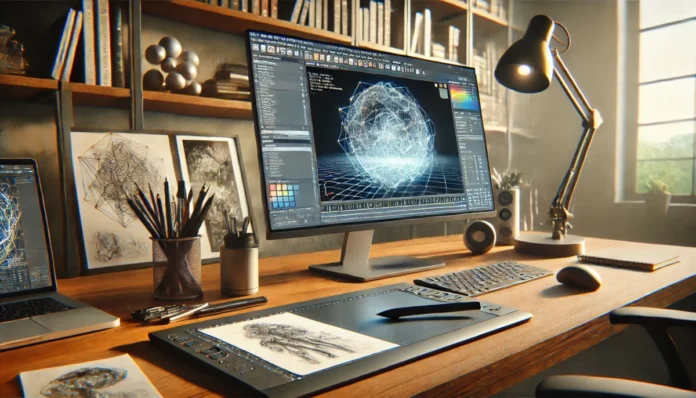3d659.com is a hub for tech enthusiasts, industry professionals, and curious minds all looking to explore the fascinating world of 3D printing. This blog offers comprehensive insights into the latest advancements, practical tips, and real-world applications of 3D printing technology. Whether you’re a beginner or an expert, there’s something here for everyone. In this post, we’ll take you on a detailed journey through the various aspects of 3D printing, highlighting its significance in modern society, technological nuances, and how you can get started.
The Importance of 3D Printing in Modern Society
3D printing has revolutionized the way we think about manufacturing, design, and even daily life. From medical implants to custom-made furniture, this technology allows for unprecedented customization and innovation. Industries such as healthcare, aerospace, and automotive have all seen significant advancements thanks to 3D printing.
One major benefit is the ability to create complex shapes that would be impossible with traditional manufacturing methods. This has led to advancements in medical treatments, such as prosthetics and dentistry, where precision and customization are crucial. Another advantage is the reduction in waste. Traditional manufacturing often involves cutting away excess material, whereas 3D printing builds objects layer by layer, using only the material needed.
Finally, 3D printing fosters innovation and creativity. Designers and engineers can quickly prototype their ideas, test them, and make necessary adjustments without the need for large-scale production facilities. This democratizes the manufacturing process, allowing smaller companies and even individuals to bring their ideas to life.
3D Printing Technology
When it comes to 3D printing, there are several technologies to consider, each with its unique applications and benefits. The most common types include Fused Deposition Modeling (FDM), Stereolithography (SLA), and Selective Laser Sintering (SLS).
Fused Deposition Modeling (FDM) is the most accessible and widely used form of 3D printing. It works by extruding heated filament through a nozzle to build an object layer by layer. FDM printers are typically more affordable, making them ideal for beginners.
Stereolithography (SLA) uses a laser to cure liquid resin into hardened plastic. This method offers higher resolution and detail, making it suitable for intricate designs and professional applications.
Selective Laser Sintering (SLS) is another advanced technology that uses a laser to sinter powdered material. SLS is known for its strength and durability, making it ideal for functional prototypes and end-use parts.
Understanding these technologies helps you choose the right one for your needs, whether you’re a hobbyist or a professional.
Case Studies and Examples
The real-world applications of 3D printing are both impressive and inspiring. In healthcare, 3D-printed prosthetics have transformed the lives of amputees by providing affordable and customizable solutions. Companies like Open Bionics are at the forefront of this innovation, creating bionic arms that are not only functional but also stylish.
In the construction industry, 3D printing is being used to build entire houses. ICON, a construction technologies company, has developed a 3D printer capable of producing homes within 24 hours. This technology has the potential to address housing shortages and provide affordable living solutions.
In the automotive sector, companies like BMW are using 3D printing to create lightweight yet strong components, improving fuel efficiency and performance. The ability to quickly prototype and test parts also speeds up the R&D process, bringing new models to market faster.
Tips for Getting Started with 3D Printing
If you’re new to 3D printing, the first step is choosing the right printer. Consider what you plan to create and your budget. For beginners, FDM printers are usually the best option due to their affordability and ease of use.
Next, you’ll need software to design your models. Tinkercad is a great free option that’s user-friendly for beginners. For more advanced users, software like Fusion 360 offers a wide range of features for detailed design work.
Finally, selecting the right materials is crucial. Common materials include PLA for its ease of use and environmental friendliness, ABS for its durability, and resin for high-detail prints. Each material has its pros and cons, so choose one that best fits your project needs.
The Environmental Impact of 3D Printing
One of the most exciting aspects of 3D printing is its potential for sustainability. Traditional manufacturing methods often produce a significant amount of waste, but 3D printing minimizes this by using only the material needed to create an object.
Additionally, 3D printing can reduce the carbon footprint associated with shipping. Instead of transporting goods from factories to consumers, digital files can be sent electronically, and products can be printed locally.
Companies are also exploring eco-friendly materials for 3D printing. For example, some startups are developing biodegradable filaments made from natural resources like cornstarch, reducing the reliance on petroleum-based plastics.
Emerging Trends in 3D Printing
The future of 3D printing is bright, with several emerging trends set to shape the industry. One exciting development is bioprinting, which involves creating tissue and organ structures. Although still in its early stages, this technology could revolutionize medicine by providing custom-made organs for transplants.
Another trend is the integration of AI with 3D printing. AI can optimize designs for performance and material usage, making the production process more efficient. It can also predict potential issues before they occur, reducing the risk of failed prints.
Finally, the rise of 3D printing in education is noteworthy. Schools and universities are incorporating 3D printing into their curriculums, teaching students about design, engineering, and manufacturing. This hands-on experience prepares the next generation for careers in an increasingly digital world.
Conclusion
3D printing is more than just a technological advancement; it’s a revolution that’s transforming industries and daily life. From healthcare to construction, the applications are endless and impactful. Whether you’re a beginner looking to explore 3D printing or a professional seeking to integrate it into your business, the possibilities are limitless.

